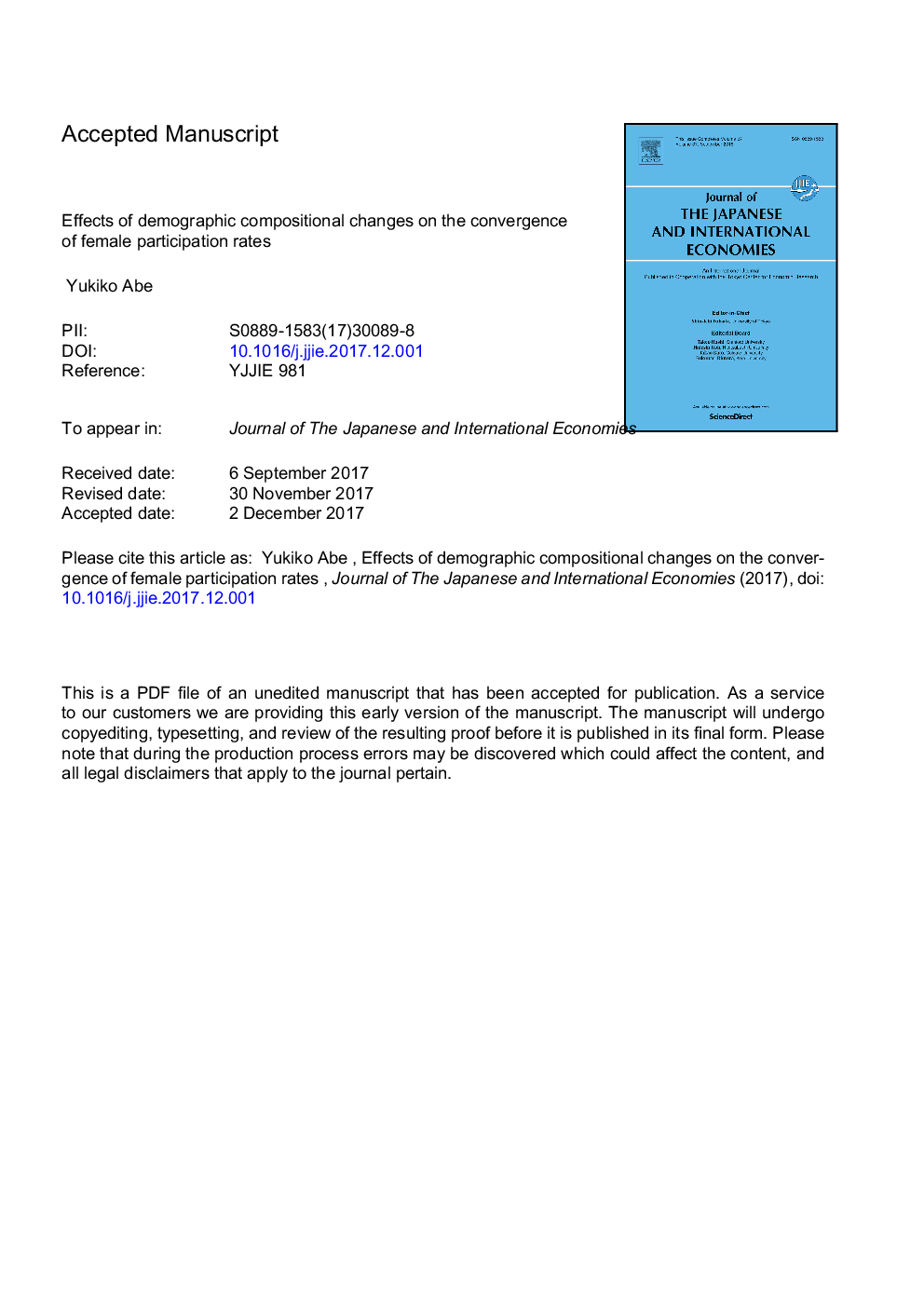| Article ID | Journal | Published Year | Pages | File Type |
|---|---|---|---|---|
| 7366264 | Journal of the Japanese and International Economies | 2018 | 28 Pages |
Abstract
Female participation rates differ significantly within Japan, but their regional dispersion decreased from 1982 to 2012. The participation rates have been low in urban areas and high in non-urban areas, and they increased more rapidly in urban than in non-urban areas. In this paper, I quantify effects of composition in education, marital status, and presence of children on convergence in participation of women aged 25-39 years. The composition accounted for 80% of the convergence from 1982 to 2012. The convergence was rapid from 1982 to 1997, when the fall in marriage and fertility accounts for all of the convergence. The convergence was slower after 1997 compared with the earlier period, and the effects of compositional changes were more limited-from 1997 to 2012, they accounted for 38% of the convergence.
Related Topics
Social Sciences and Humanities
Economics, Econometrics and Finance
Economics and Econometrics
Authors
Yukiko Abe,
